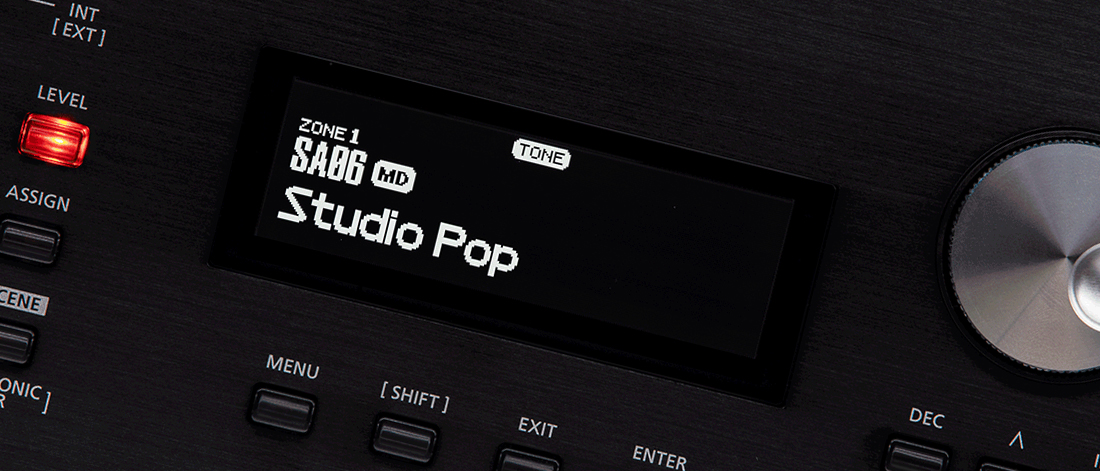MusicRadar Verdict
The Roland RD-2000 EX is a flexible and appealing professional grade keyboard, which can go way beyond the traditional realms of a stage piano. Going deep on-the-fly might tempt fate, but organising patches in advance will yield a superb playing experience.
Pros
- +
The RD is an engaging and highly playable stage keyboard.
- +
Extensive collection of sounds, covering all the usual keyboard players’ timbral requirements.
- +
Perfectly resourced I/O, making it easy for gigging, or for use as a MIDI controller.
Cons
- -
OS navigation can feel bloated and confusing the deeper you go.
- -
It’s quite a heavy keyboard!
MusicRadar's got your back
Roland RD-2000 EX: What is it?
Designed with gigging keyboard players in mind, as well as those who might require a flexible MIDI controller keyboard, the Roland RD series is a pretty dependable product line.
Previous incarnations of RD were renowned for flexibility, coupled with a desirable keyboard action which aficionados of the weighted keyboard realm have heartily applauded. But this is also a market that has become fiercely competitive, in no small part thanks to Nord and Kurzweil, both with skin in the stage piano game.
Roland RD-2000 EX: Performance and verdict
If you are the sort of keyboard player who was brought up with the piano, you are going to feel very at home with the RD-2000 EX keyboard action. Roland has employed its PHA-50 keybed technology, in a fully-weighted 88-note design, constructed from wood and plastic. As any experienced keyboard player will attest, all keyboards and pianos are different, but once over the RD’s initial hurdle of unfamiliarity, you quickly start thinking about your playing, and less about the keyboard itself. That’s a good sign!
Moreover, the RD is replete with controls, providing a useful immediacy for switching patches or performance expression. A crisp illuminated display is in the centre of the RD’s panel, with nine chunky buttons immediately to the right. These buttons allow quick access to sounds and patches, with a further row of buttons above, for deeper access. There is a ubiquitous scroll wheel, with the equally familiar Inc/Dec buttons, accompanied by arrows to aid navigation and scrolling.
To the left of the keyboard are the real-time control elements: eight infinite rotary pots line up alongside nine faders, all of which can be deployed in a number of different settings. The faders initially act as volume controls for each zoned sound, either from within the keyboard or externally. Roland has provided several preset examples, one of the most obvious being subtle strings which can be increased quickly and easily alongside any primary pianistic tone. They can also be redeployed as drawbars, if playing Hammond-like sounds, or programmed to emit MIDI controller information.
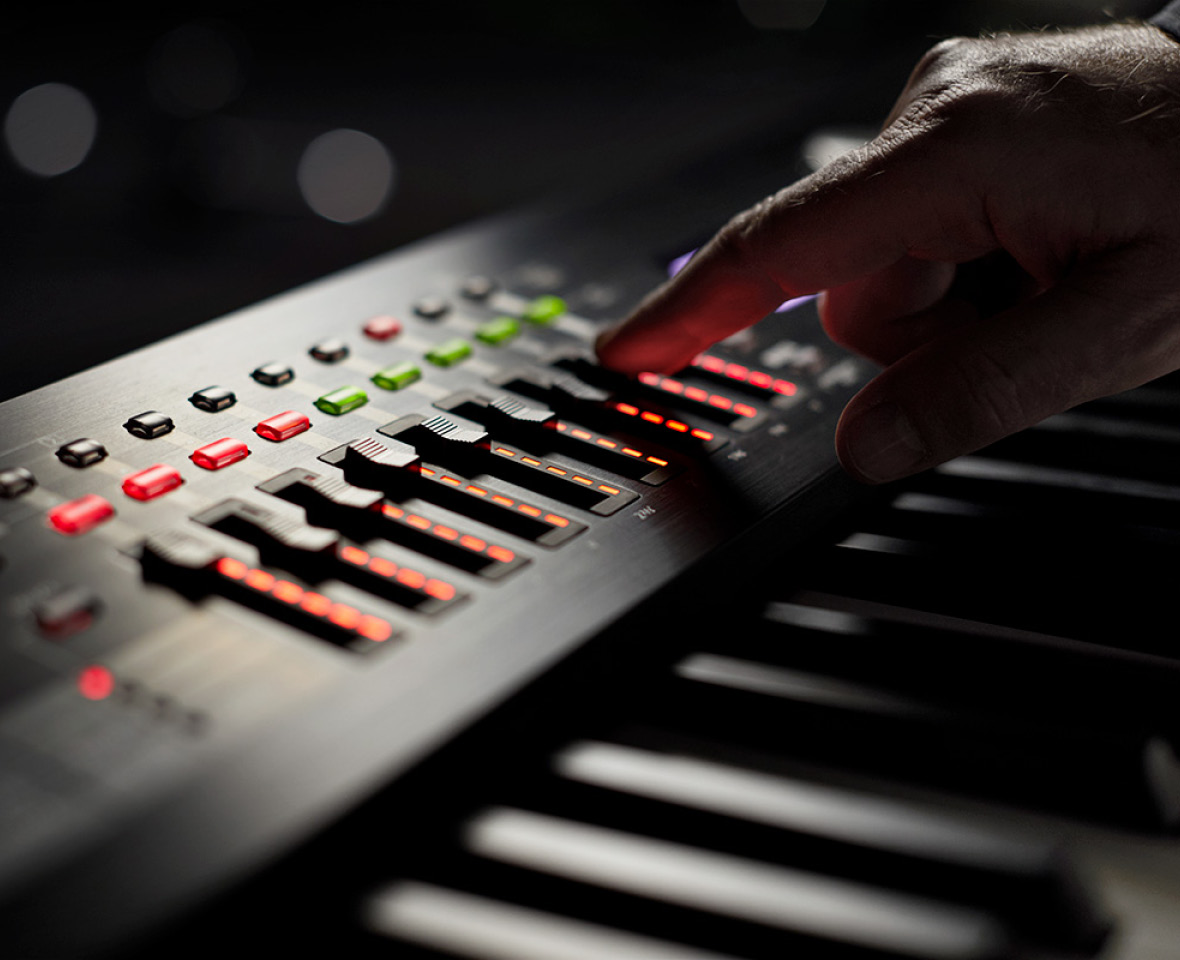
Get connected
There’s a healthy number of socket essentials around the back, starting with a main pair of XLR outputs. This provides instant DI connectivity, alongside four supporting 1/4” jack outputs, acting as a mirror to the main out, and an assignable sub-output pair. I/O is also available via USB, allowing connection to a USB stick or computer. A minijack audio input provides simple playback from a device such as a phone.
Further expression control is provided by four 1/4” input points, for various forms of pedal. Roland helpfully supplies a sustain pedal as part of the package. At the opposite end of the panel is the power input, which accepts a standard IEC cable, negating any problems with earthing or substandard DC power supplies. This might all seem like basic stuff, but to a gigging keyboard player, it’s the simple things that make a real difference!
Want all the hottest music and gear news, reviews, deals, features and more, direct to your inbox? Sign up here.
The sonic realm
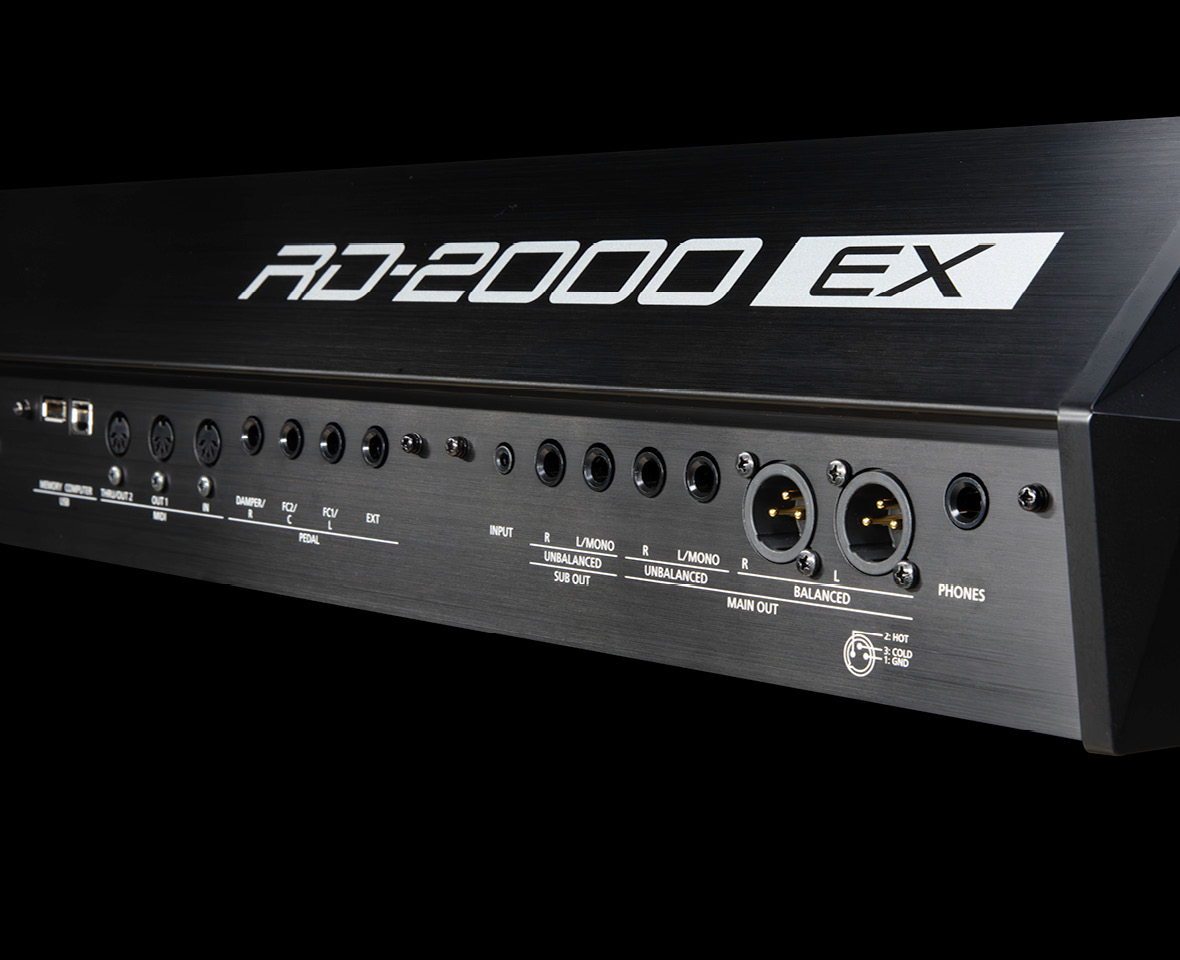
At first sight, the EX model of RD-2000 appears very similar to its predecessor, but the differences become apparent when you start to dive into the sonics. One of the improvements emanates from the rewriting of the included V-Piano algorithm, resulting in greater sonic performance and realism. Roland is keen to take advantage of this, providing an extensive array of new patches to show off its new technology.
As you scroll through, you cannot help but appreciate the sheer volume of the overall supplied tones. Across the entire RD, there are over 1,100 sounds, with the initial salvo taken up extensively by pianos. Both the new V-Piano and SuperNATURAL technologies are included as sound engines, with enormous diversity in the pianistic colours available.
At the most impressive end is the German Concert, modelled on a Hamburg Steinway Concert Grand. As a solo instrument, it is impressive and weighty, with all of the beauty you would expect in the lower mids from an enormous grand piano. This is fine for entirely soloistic duties, but in the commercial domain, we often want something a little brighter, that will cut through a mix or live PA. Scrolling through the patches, the Studio Pop piano easily provides a colour which is associated with popular Japanese brands, while continuing to sound balanced.
The sonic sojourn continues through Tine, Reed and FM-based electric pianos, Clavs, Harpischords, Mallets, and on to Strings and Pads, like a professional version of an old GM synthesizer. The bottom line is that everything you are likely to need as a live keyboard player is available, and moreover, the choice is bewilderingly extensive. You would think that there would be plenty of similarity, but thanks to the extensive tones, coupled with the comprehensive effect section, you can find what you need relatively quickly, and utilise it for immediate recall on a gig.
Of course, a large part of the RD’s feature set relates to the layering and splitting of the keyboard. This is fairly easy, thanks to the central display and ability to control partial volume, from the performance faders.
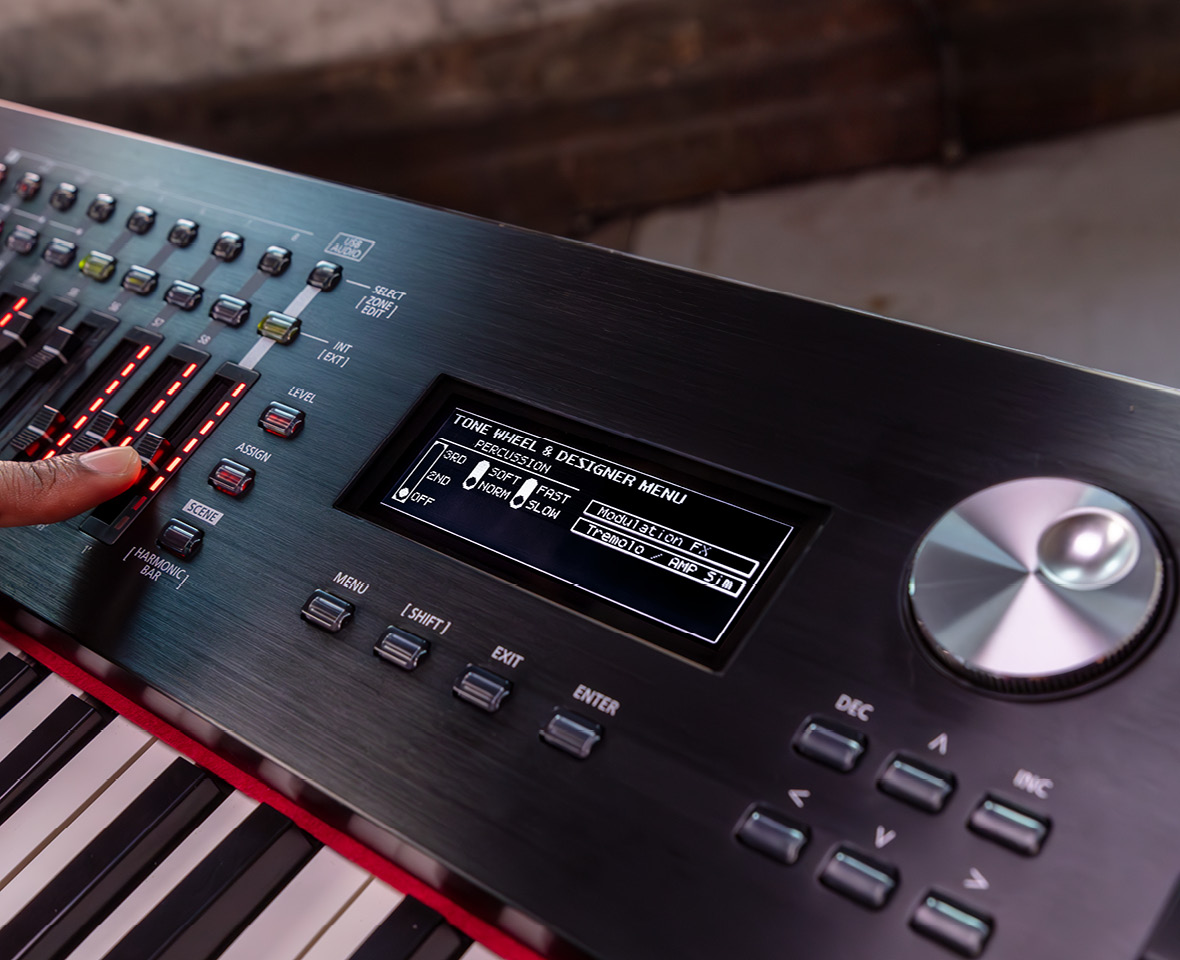
Verdict
The RD-2000 EX offers a beautifully expanded bounty of immediate sounds, providing an impressive backbone, for a reliable keyboard format. However, the operating system seems to get more complicated the deeper you dive, and providing you don’t need to do this during a gig, should not be a problem during performance. It’ll take time to understand the multi-use nature of many of the controls. In our testing, we found ourselves moving faders on several occasions, and providing the wrong outcome, due to its current setting. This might be dangerous in a low-lit gig environment, but providing you organise your patches to suit your workflow, it’s an excellent choice of stage piano or controller keyboard, for gigging and studio musicians.
MusicRadar verdict: The Roland RD-2000 EX is a flexible and appealing professional grade keyboard, which can go way beyond the traditional realms of a stage piano. Going deep on-the-fly might tempt fate, but organising patches in advance will yield a superb playing experience.
Roland RD-2000 EX: The web says
"Roland’s RD-2000 EX ticks every box: it’s robust, feels fantastic, provides high-quality sounds in every category, and features, quite possibly, the most dynamic piano (V-Piano) sounds in any portable instrument. It’s outstanding."
Higher Hz
Roland RD-2000 EX: Hands-on demos
RolandChannel
Merriam Music
Digitalpianocom
Kraft Music
Roland RD-2000 EX: Specifications
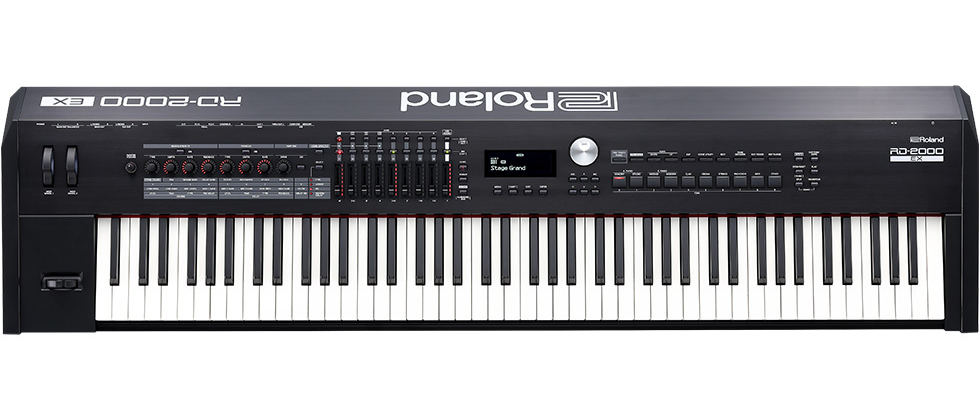
- KEY FEATURES: Unlimited Polyphony (V-Piano Engine). XLR and 1/4” Balanced outputs. Full MIDI and Audio-over-USB implementation. Inbuilt power supply (IEC cable). Fully-weighted 88-note keybed. Pitch ‘Bender’ plus pitch/modulation wheels onboard. Real-time control via pots and faders. Over 1,100 onboard sounds. Extensive multi-FX section.
- WEIGHT: 21.7kg/47lbs.
- CONTACT: Roland
Roland Schmidt is a professional programmer, sound designer and producer, who has worked in collaboration with a number of successful production teams over the last 25 years. He can also be found delivering regular and key-note lectures on the use of hardware/software synthesisers and production, at various higher educational institutions throughout the UK
